

Neil Briscoe
2026 Xpeng G6 AWD Performance review: Quick drive
4 Days Ago

Contributor
Citroën occupies an interesting position in the Stellantis stable of French brands.
With Peugeot positioned as a semi-premium brand to take on Volkswagen directly, and DS spun out of Citroën as its own marque to bring a certain French luxury twist to rival Audi, Citroën has been positioned as a more generalist, everyday brand, arguably akin to Skoda.
Citroën (and DS) can draw on a storied heritage of large, quirky saloons that, while not to everyone’s taste, have majored on comfort and have pioneered numerous innovations along the way.
The original Déesee, translating to goddess and more widely known as the Citroën DS (inspiration for the current DS brand), featured a magic carpet ride thanks to its hydropneumatic suspension. Later models, such as the CX, XM. and even the more recent C6, featured increasingly advanced versions of this suspension.
With the last C6 rolling off the production line in 2012 – at least for global markets, China saw a new generation – the C5 X marks something of a return to the marque’s spiritual roots. It’s been locked in for Australia, with an arrival set for late in 2022.
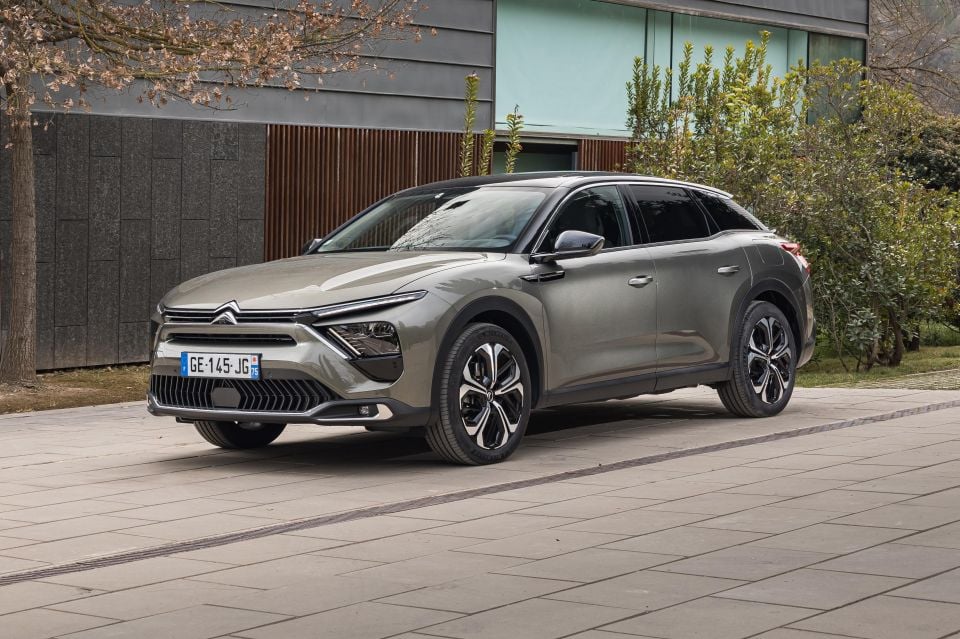
Citroën claims the C5 X’s “body style is immediately striking: assertive, robust and distinctive. It features a fastback body style that blends saloon and station wagon by adding some elements that make SUVs so appealing”.
In reality, Citroën has created a high-riding station wagon in the mould of something like the Subaru Outback, but with a sleeker, less slab-sided design that uses extended rear spoilers to create perhaps a passing resemblance to an elegant sedan.
The tail and rear three-quarter view are perhaps the strongest evidence of Citroën’s ability to fuse these three types of vehicle. The design of the tailgate is similar to a typical station wagon, with a wide aperture.
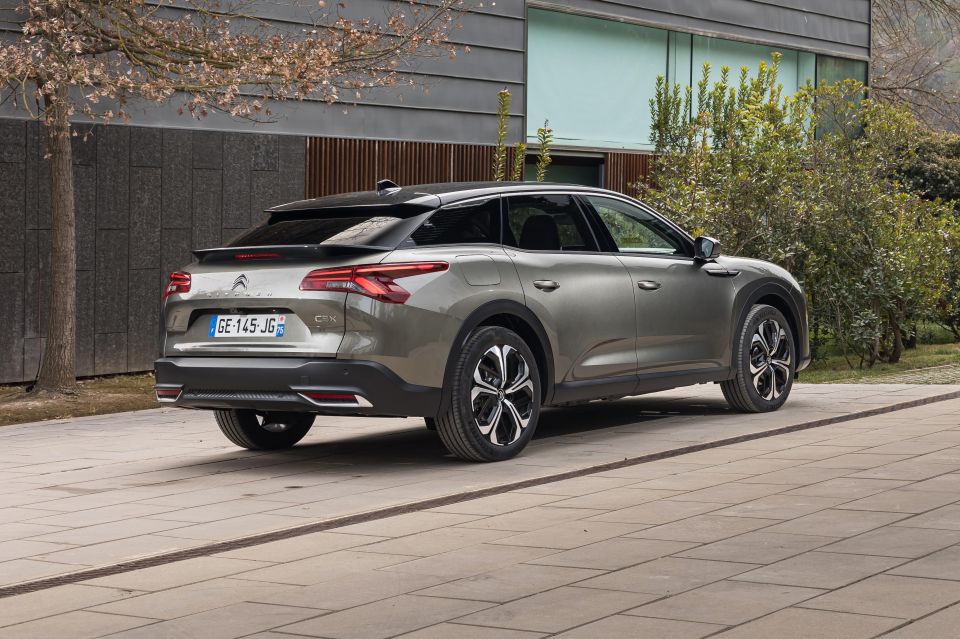
However, the steeply-raked rear windscreen coupled with both a roof-mounted spoiler and a larger, almost ducktail counterpart at the windscreen’s base create a quasi-fastback silhouette.
This is enhanced by strakes on the rear quarter panel that provide a subtle optical illusion about to how steep the C5 X’s rear glasshouse is. A raised ride height, and matte black plastic rear bumper and wheel arches, complete the look by adding a hint of off-road ready, SUV style.
Perhaps the most impressive aspect of the C5 X’s side profile is the understated curvature that commences above the door handles (across both front and rear doors) before curving inwards to meet the bottom of the side windows.
An interesting alternative to simply adding a body line or side crease to the door panels, it gives the sheetmetal more shape than a traditional wagon might have.

In the right weather conditions and at the right angles, it also creates the opportunity for sunlight to create a more interesting combination of highlights and shadows to accentuate particular aspects of the C5 X’s design.
The front of the car, in contrast, remains typical of other recent Citroëns, featuring the latest angular split headlight family face as seen on vehicles such as the C4, C3 Aircross (no longer sold in Australia), and to a lesser degree, the C5 Aircross.
LED daytime running rights positioned at a 45 degree angle towards each other, while the main headlamp unit and fog lamps are located in separate clusters below the upper DRL.
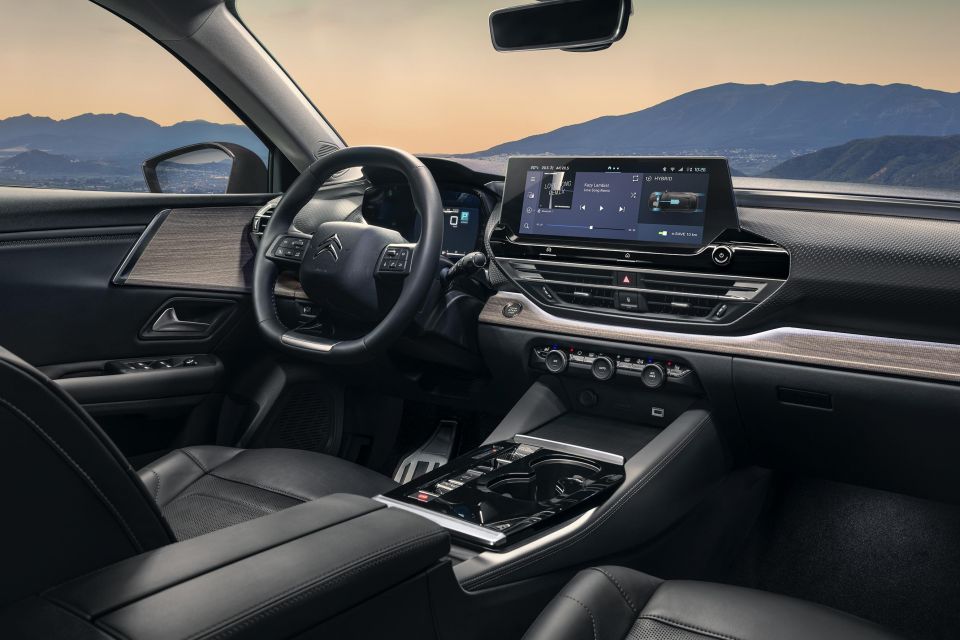
Citroën claims the overarching theme of the interior is a feeling of at-home comfort and wellbeing through a sense of spaciousness and a bright, airy atmosphere.
Key to this are the C5 X’s lounge-style advanced comfort seats, which feature high-density foam at their core, as well as a thicker, textured foam on their surface. The front seats can additionally be optioned with heating, ventilation, and massage functions.
The advanced comfort seats form part of a broader program to endow the C5 X with the same magic carpet ride as its predecessors. This also includes Citroën’s progressive hydraulic cushion suspension, which has two hydraulic stops on the dampers (compression and rebound) to take the edge off sharp bumps.
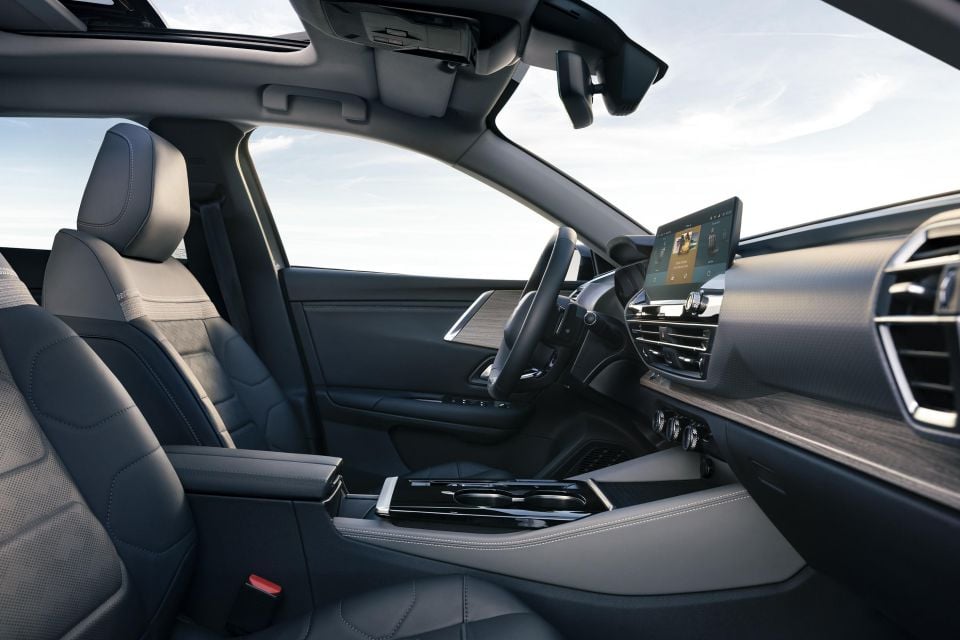
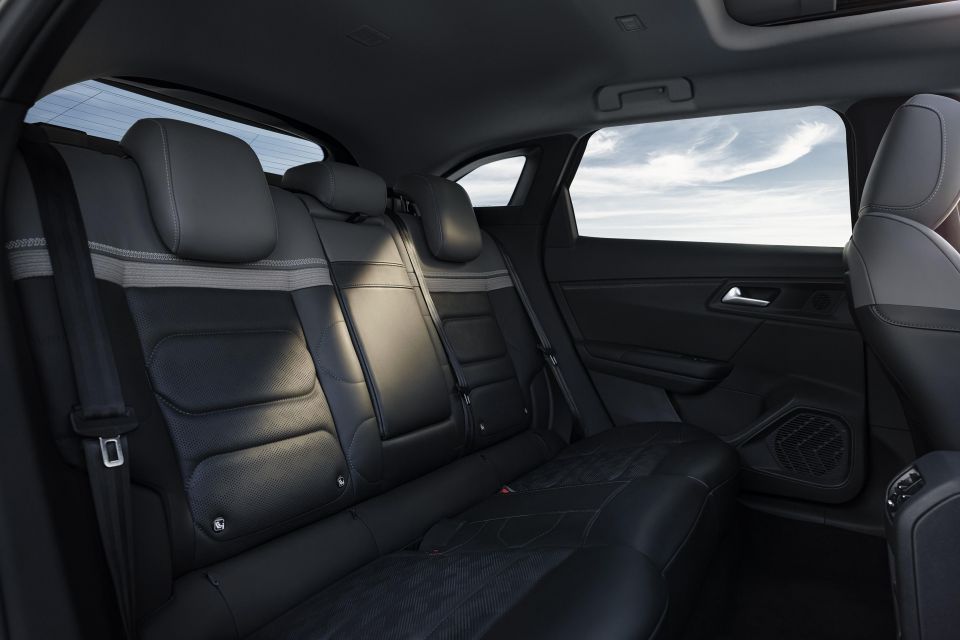
Plug-in hybrid versions of the C5 X also pair this with an active suspension system, inspired by the Citroën C6’s AMVAR system, designed to analyse the road surface to determine the appropriate suspension firmness at each wheel.
The interior is designed to have a refined, open feeling, emphasised by features such as the horizontal architecture of the dashboard with wraparound open-pore wood trim, enhanced soundproofing with laminated front and rear windows available, and a variety of storage spaces for front and rear passengers.
Unlike other vehicles today which have a coupé-like silhouette that compromises visibility in favour of style, Citroën claims the C5 X offers 360-degree visibility for the driver and other passengers, through features such as glass (rather than closed-off plastic) quarter-windows.
Notably, unlike Peugeot which has attempted to create a more driver-focused cockpit with the central infotainment screen tilted towards the driver and a rising ‘bridge’ type centre console that offers clear separation between driver and front passenger, Citroën has opted for a more symmetrical approach to give drivers and front passengers equal access to the infotainment display.
Where expert car reviews meet expert car buying – CarExpert gives you trusted advice, personalised service and real savings on your next new car.


Neil Briscoe
4 Days Ago


Max Davies
3 Days Ago


James Wong
2 Days Ago


William Stopford
2 Days Ago


Josh Nevett
16 Hours Ago
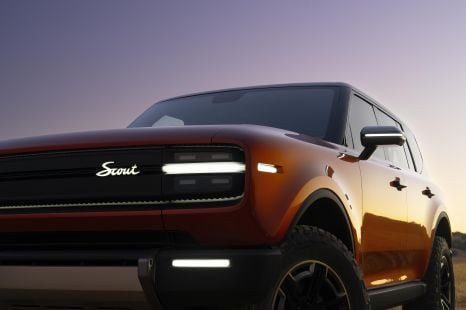

Ben Zachariah
13 Hours Ago